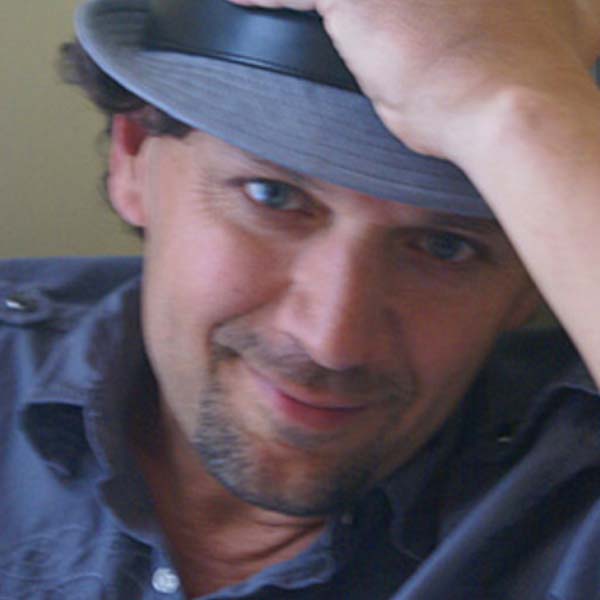by Marty Dodson
Oct 31, 2023
Sony A&R Executive Taylor Lindsay shares about her job and about what she does as her official title.
Chapters
Chapter 1: Background
Chapter 2: What is a Director of A&R?
Chapter 3: What do A&Rs look for in Artists?
Chapter 4: How is being a publisher and being an A&R different?
Chapter 5: Do artists always sing factual songs about their life?
Chapter 6: What happens in a publisher meeting?
Chapter 7: How is it different finding songs for new artists vs. established artists?
Chapter 8: Do artists have a say in what gets cut?
Chapter 9: What happens in a final song meeting?
Chapter 10: What are proper channels for a new songwriter to get songs heard?
Chapter 11: Q&A’s
Chapter 1: Background
I worked at BMG Chrysalis for a few years, pitching songs there and developing some writers. We had a full roster, about 36 writers and 13 of those were mine. I was directly responsible for pitching their songs. There was an opening at Sony and I accepted the position.
Chapter 2: What is a Director of A&R?
My official title is Director of A&R. My role there is I wear a few different hats, my primary role is to find songs for our artists, from the publishers. So, a plugger will come in and pitch me a song. And if I like it, I’ll then turn around and play that song for an artist to hopefully have them cut it. Then my secondary to that is scout. That’s a really big part of my job. I try to draw on new artists, try to get to showcases. We really try to keep our ears to the ground. Lots of times writers come to us and say, we’ve been developing this act, or we’ve been writing a lot with this act, producers come to us. And so, we really just try to keep our ear to the ground with that. And then that process is always a collective process between myself, Jim Katina and Gary Everton, who is the CEO of Sony. We sign everything together. We work as a team and then we see it through.
The third part of my job is really developing those artists. We are involved in every process. We are approving budgets, looking at videos and photos and approving images. We are approving all of the rest of the miscellaneous admin stuff. We are in every single marketing meeting to make sure that the brand that we originally found with the artist is evolving in the way that we want it to. And then, while we’re doing all that, we’re searching for songs and going into the studio, telling them what to cut.
Chapter 3: What do A&Rs look for in Artists?
We bring an artist in and we kind of ask ourselves a few things. The first thing is always what is our gut reaction. And then the second thing is, we really want to focus on signing people that are going to have a sustainable career. We don’t want someone that is just going to be a one hit wonder, and we don’t want someone that is just chasing radio. So, if a duo came into my office that sounded like they were on top of, for instance, Florida Georgia line, I would most likely say, you’re probably not the artist for us because we want to find the next thing, the next curve of radio, the next thing that excites listeners, the next evolution of the sound.
So, when we think about that, that’s when the whole branding part really comes in because we kind of go, okay, is this far enough ahead of the curve so that the bro country stuff subsides, or if traditional country comes back in or if pop country grows more, we could still live in that market. But also are they commercial enough to be on the radio now to have a solid chance at being able to break them now in the current market?
I never want to change someone’s art. I never want to stifle their creativity or who they think they are, but we definitely try to tweak little pieces because we are in a way, a business, it’s an industry. We have to make sure that they’ll work on radio that’s first and foremost the primary goal.
Chapter 4: How is being a publisher and being an A&R different?
My taste in music has evolved in the position that I’m in because before I was just in my own little bubble of my little 13 writers or 36 writers at BMG and I didn’t really have the opportunity to hear the songs from all the other publishing companies. So that’s the most obvious difference.
The bigger change, I guess is more about just how I listen, because before I would take a song in and I would just feel so passionate about it. I really pitched from my heart. Now it’s very strategic. I hear songs and I really analyze them. I think what my artists will say, what they won’t say, what the perception of their fans are towards them, what their fans want to hear, what we need to fill out a record, what we need on a single what will drive sales. All of those things go through my head when I’m listening to a song for the acts that I have, it’s very different.
Chapter 5: Do artists always sing factual songs about their life?
I think that it really is an artist-by-artist case. You have Florida Georgia Line who sings about really what they do. Or Jake Owen who really is singing about his brand when he’s singing in Barefoot Bluejean Night, that he grew up in Florida. There usually though is always at least one song that we can get an artist to sing that they connect with. The situation, the song, the story isn’t something that they’ve experienced, but if it’s a great song, it’s a great song and usually those are ballads.
Chapter 6: What happens in a publisher meeting?
Well, first and foremost, I usually take about six or seven publisher meetings a day. So that is when a song plugger or a publisher will come into my office, and they’ll hand me a disc with typically five or six songs on it. I play through the songs while they’re sitting in my office and I discuss with them if they will work or not. I’ll usually take a copy so I can relisten or sometimes I’ll pass on it. Sometimes I’ll put a hold on the song and putting a hold on a song is when we notify all the publishers and we tell them, we’d like to hold it for, say Jake Owen. And that means that basically they’re giving us their word that they won’t pitch it to another artist until we let Jake hear it and get an answer from him if he likes it or not. We try to not hold a song for longer than two weeks if we haven’t heard back.
Chapter 7: How is it different finding songs for new artists vs. established artists?
Well, because Kenny Chesney is so big, he has a number of relationships that he’s built over the years on his own. So his access is much larger for finding songs than just me and Jim Katina. Writers will send him songs directly. Publishers sometimes send him songs directly. But in a way it’s a lot easier trying to find a song for Kenny Chesney than Ryan Griffin because the brand is there. They know what they want sing about, what they will sing about, what their fans expect from them. We know internally based on our track record with sales and other things, what reacts. The analytics are there and they’re so evolved that basically it’s all at our fingertips just to find a great song for him.
With Ryan, it’s a lot different because we have nothing to go on. He doesn’t have as many relationships and we are still really trying to form his brand and the sound of the music. So, we really have to dig in with him and develop.
Chapter 8: Do artists have a say in what gets cut?
Yes, we’re not the only ones that make the decision. Ultimately there’s the artist that almost always has a say in what they cut and what the single choices are. The management companies and the promo staffs and A&R are in it, it’s definitely a collective effort.
Unfortunately for political reasons, the best song doesn’t always win and I’m the first to say that not every song we cut on an artist is the best song. I mean, we try really hard to make sure that we are filling records with great songs that are well-written, whether they’re tempo party songs or ballads, we try to make sure that there’s a place for all of those songs.
Chapter 9: What happens in a final song meeting?
The first round of cutting, in all of these meetings, it’s our team, the artist, the producer or producers and sometimes a manager will sit in, depending on the level of the artist. We have our stars and our superstars, and then our baby acts, if it’s a star level or higher it will be a manager, usually.
The first round of that is always singles. We cut singles first because to set up a record, you need a single out on the radio. So, we’ll release a single and depending on who the act is, push it to radio.
So, that first initial meeting is to pick the songs we’re going to cut, we have to find that first driving single, that’s our goal. We cut usually in one round, we’ll cut an artist, we’ll cut four songs, maybe five, if they’re lucky. And we want as many of those to be single contenders as we can. Typically of the songs, only two of them end up being singles because then we have the next four months to find the rest of the record.
Chapter 10: What are proper channels for a new songwriter to get songs heard?
If they turn a song into a pro representative and that rep likes the song, that rep can pass it along to us or connect us with them through the recommendation of the pro. Another way is through NSAI. Anytime Bart calls us and says, hey, I have a song you might be interested in. I take the meeting. Then the third way is through other writers and producers. Anyone in town that they have a relationship with. You can’t just walk in as an unknown and hand us a song. You have to go through a relationship somehow.
Chapter 11: Q&A’s
share
Write Better Songs Faster
Songwriting Success is Clay & Marty's 10-day video series that will help you level-up your songs and finish them faster. Enter your email address to get started!



